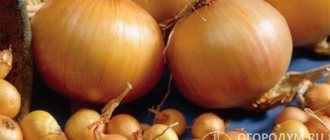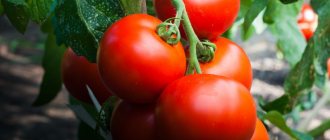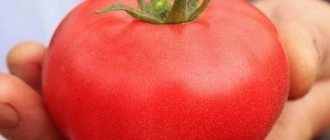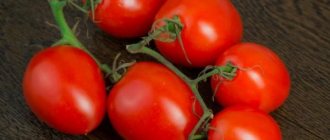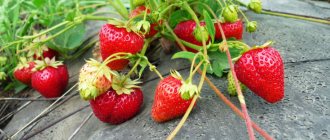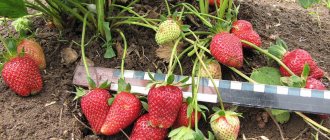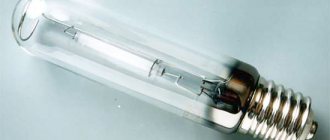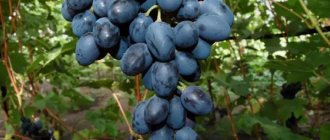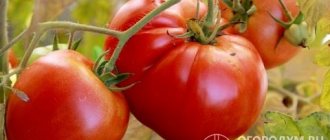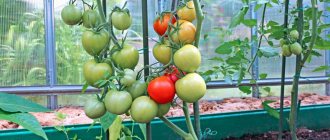Albion strawberries appeared on the berry market recently, but managed to win the hearts of many summer residents and professional gardeners. The variety was bred in the USA based on the popular “Diamond” and patented in 2006 by specialists from the University of California (“The Regents of the University of California”). It is not listed in the Russian State Register, but in 2013 it was included in the register of Belarus as recommended for cultivation in open ground throughout the country.
Strawberry "Albion" (pictured) is a remontant, highly productive variety intended for commercial cultivation and home garden cultivation
The variety is zoned in fairly mild climatic conditions, so it shows the best results in the USA and Italy. "Albion" is known in Canada, continental Europe, Russia and the post-Soviet countries, where it is grown with the greatest success in the southern regions. In the middle zone, it demonstrates relative endurance and lower yields; it feels more comfortable in protected soil.
Let's consider all the advantages and disadvantages of the Albion strawberry variety in the description.
Description of the variety
Next you can learn more about Albion strawberries, description of the variety and its features. The variety was bred by plant breeders from America. In the USA there are better climatic conditions for it, but in mid-latitude areas the assortment is also designed to give decent results.
The bushes have strong, dark green leaves, strong and long flowers. The weight of the fruits does not cause them to bend towards the ground, this makes harvesting convenient, and the berries do not rot from contact with the ground.
Feature of the variety: young leaves shine as if covered with oil.
Albion is a strawberry variety whose properties are not affected by seasonality and daylight hours. From early summer to mid-autumn, this strawberry variety will delight you with 3-4 waves of the resulting harvest. In the northern regions, the last fruits may not ripen and the bush with berries will be covered with a layer of snow.
To increase productivity from the beginning of spring to the end of autumn, owners choose to cultivate this berry in greenhouses. Strawberries can produce their first harvest in the second year after planting.
When using a greenhouse, the crop can yield up to 2 kg of fruit per bush. Gardeners talk about weight: 300-500 g. The existing difference shows that the variety requires proper care and proper climate conditions.
Albion strawberries reach their highest yield in August.
Possible problems
Gardeners often complain that after winter, Albion leaves acquire a yellowish tint and chlorosis develops. To cope with the problem, you need to treat strawberries with a 30% solution of iron sulfate.
If the bushes come out stunted after wintering, with the root collar raised above the ground, you need to sprinkle the plants with fertile soil and cut off the first flower stalks. Let the strawberries gain strength for the second wave of fruiting. When parts of the plantation freeze, the plants are better prepared for wintering.
Albion strawberries are a high-yielding, remontant variety with berries of excellent taste. But it can grow and bear fruit abundantly only in southern regions with a mild climate. Whether it is worth spending time on it in other areas is up to the gardener to decide.
Fruit characteristics
The description of strawberries required for Albion continues with a story about what its fruits look like. In general, large berries range from 30-50 g, their size increases due to fertilizing. The skin on the fruit is bright red with a pink core.
On one bush you can find heart-shaped, oval and oblong fruits, but for the most part the berries are equal and are great for sale.
The pulp is known for its high density, which increases the ability to lie down and be transportable, but is not to the taste of many gourmet gardeners.
Reviews
I said goodbye to Albion. First of all, there is no taste. The berry is beautiful, but impossible to eat. Secondly, it bears fruit normally only for one year. Already in the second season the bushes are somehow tortured and practically do not produce flower stalks. In addition, chlorositis is common. When there was chlorosis, I poured urea (30 g per bucket and a liter per bush), it helped, but not all the bushes, some fell out.
Those who write that Albion is sour and soft - “You just don’t know how to cook it.” But seriously, you should wait for the burgundy color of the berries. Red berries are technically ripe, they can be picked, but then you have to keep them at home for a couple of days and they will “arrive”, but it’s better to keep them right on the bush. Here is a burgundy berry that is tasty and aromatic and less dense. And density cannot be regarded as a disadvantage; “Albion” is used by many as an industrial grade, and therefore must keep its shape during long-term storage and transportation.
A good harvest of Albion strawberries can be obtained with a minimum of agrotechnical measures. For fruit growth and formation, you need soil high in nutrients, moderate watering and regular inspection for diseases and pests.
Advantages
The main advantage of the Albion variety is its ability to bear fruit from May to October. There are also many other advantages:
- Drought resistance.
- Large fruits.
- A little mustache.
- High yield.
- Good storage capacity and preservation of presentation.
- Easy propagation using several methods.
- It is self-pollinating and can be grown in closed greenhouses
- Excellent immunity to most diseases, so it is possible to grow the variety without chemicals.
Some disadvantages include: poor tolerance to heat above +30 degrees, hollowness forms in the middle of the fruit due to incorrect growing techniques, chlorositis disease, and requires frequent care when caring for the plant in greenhouse conditions.
The best place for Albion strawberries
"Albion" grows on any soil, but prefers acidified fertile loam. Strawberries produce a bountiful harvest in a well-lit, level, drained area with warm, loose soil. You should not plant plants in the shade of trees and bushes, behind buildings, or near water bodies.
Unwanted Precursors:
- tomatoes;
- potato;
- eggplant;
- raspberries.
Ideal neighbors for Albion strawberries: garlic, mustard, parsley. If you plant nasturtium nearby, the flower will attract aphids, protecting the berry plantation from attack by pests. Growing the Albion variety together with garlic will protect the crop from gray rot.
Planting a crop
The Albion variety loves heat, so it is suitable for warm regions of the country. It is recommended to plant it at the onset of autumn. Then the bushes will take root before winter arrives, and next season they will bear fruit well.
In northern lands and temperate regions, planting should be done in the spring, and the first harvest must be discarded; for this, the flower stalks are pinched off so that the planting takes root well.
Choose a plot for planting Albion strawberries that is well-lit, flat or with a slight slope, protected from gusts of wind. The soil is enriched by introducing a considerable amount of organic fertilizers.
On depleted soils, up to 2 buckets of fertilizers per 1 m2 are required.
When planting, leave 30 cm between plants and 60 cm between rows. It is not allowed to deepen the bush too much or leave it with its growing point protruding from the soil. In all these cases, the strawberries will quickly or slowly die.
If fertilizers were not added during the preparation of the plot, then they need to be added during planting, the planted strawberries are well watered, the soil is mulched with hay and straw.
For large plantings, the spaces between the rows are covered with dark agro-fibre, which stops the growth of weeds. But there is a danger of infection of the root system with gray rot. Owners are advised to place straw or hay between the rows.
Features of care
The advantage of the variety is excellent yield with minimal care. “Albion” only needs to be watered and fed on time.
Watering
Remontant strawberries "Albion" need regular and abundant watering. It is recommended to use a drip irrigation system. Moisten the bushes every 4–5 days. In hot weather, water more often.
Top dressing
Albion strawberries are very responsive to fertilizing. But you shouldn’t be overzealous with fertilizers. Plants will begin to “fatten” and reduce yield.
| When to feed strawberries | What and how |
| In spring, after the snow melts | 20 g of carbamide at the root |
| Before flowering | 20 g of potassium sulfate per 10 liters of liquid. Apply 0.5 liters per bush |
| in autumn | 40 g nitrophoska + 250 g ash per 1 m2 |
Weeding and loosening
The soil around the Albion strawberries must be loosened after each watering and rain. If the plantation is mulched or the bushes grow on agrofibre, then the procedure is carried out in spring and autumn.
Reproduction
The Albion strawberry produces few tendrils, which are easy to track.
The mustaches are left and rooted in the same bed, not far from the mother bush. Unlike other strawberry varieties, the mustache produced by the rooted rosette is also used for propagation. They are grown in a special bed - a nursery.
Strawberries can be propagated by dividing the bush, cutting it into 3-4 parts. Each division should have growing points and flower buds.
Transfer
Transplantation to a new place is carried out every 3 years, otherwise the yield of the variety will fall. Rosettes are rooted in the spring, after the threat of return frosts has passed. In the central regions, young plants are covered with spunbond.
How to replant strawberries in spring→
Trimming
The description of the garden strawberry variety “Albion” says that pruning is not necessary. In the first year, it is necessary to remove peduncles and tendrils.
Mulching
To retain moisture and protect strawberries from weeds, the row spaces are mulched with a layer of hay, straw or sawdust. Black agrofibre and pine needles are excellent.
Mulch eliminates loosening, weeding and overheating of roots. The covering material prevents the berries from coming into contact with the soil, which prevents damage to the crop.
Useful video about mulching strawberries
Preparing for winter
The variety has poor frost resistance. To preserve Albion strawberries in winter, the plantation is mulched with a thick layer of straw and covered with non-woven material. When precipitation appears, the strawberry beds are covered with snow and snow catchers are installed.
Watering and weeding
Despite the variety's tolerance to drought, it needs to be watered regularly - more when flowering, and less when berries are formed. In rows with strawberries, you need to regularly pull out weeds and loosen the soil.
To reduce maintenance, the soil is mulched. Before the arrival of winter, plants are covered with straw, spruce branches, fallen leaves, covered with film or white agro-fibre. The variety is able to grow well and produce berries in one place for 4-5 years.
Reproduction and feeding
Propagation by seeds is a difficult matter, and strawberries can become dusty with other varieties. The Albion variety produces few tendrils; young plants produce more of them than those finishing fruiting. Well-rooted, overgrown bushes that are 2-4 years old can be divided and planted.
This type of strawberry requires fertilizing from time to time, since it bears fruit for a long time, during which the soil becomes depleted. The plants are given humus, a solution of slurry 1:10; vermicompost, bird droppings 1:20, herbal infusions.
In spring it is worth adding ash. In summer it is important to apply mineral fertilizers. When flowering, it is recommended to apply foliar fertilizing. Strawberries also require iron-containing fertilizers to increase yields.
How to choose good seedlings
For abundant fruiting, healthy, high-quality strawberry seedlings are required. When choosing seedlings, preference is given to specimens with:
- strong roots;
- root collar with a diameter of 6 mm;
- bright green leaves without signs of dryness or damage.
Experienced gardeners in their reviews recommend keeping strawberry seedlings of the Albion variety in a dark and cool place for 6 days before planting for better survival.
Fighting parasites and diseases
The Albion strawberry variety has good resistance to common diseases of berry crops: late blight, anthracnose, verticillium, heart rot. In order to prevent disease, it is recommended to plant strawberries near or after nightshades, and not to plant near raspberries.
As a preventive measure in the spring, sweet berries can be sprayed with 2% Bordeaux mixture.
In order not to use chemicals in the fight against aphids, the bushes are sprayed with an aqueous solution of laundry soap and garlic, and marigolds are planted between the rows. In overcoming white spotting and chlorosis, the medicines Horus and Topaz can defeat the disease.
Growing in a pot
You can grow Albion at home, in an apartment, using ordinary pots. The process is hydroponic, in other words, without using soil. To do this kind of growing in pots, holes are created for the root system, after which strawberries are placed and filled with porous material that allows moisture to pass through. This material will provide optimal oxygen access.
Gravel or expanded clay, crushed stone can be used as a porous material, but if possible it is better to use coconut fibers. The plant is fed by watering with a water solution containing mineral-based fertilizers. It is recommended to immerse the pot in the solution.
The hydroponic growing method is a salvation for many people, we are talking about those people whose soil is clayey or poor, and the season is very dry. Thanks to this technique, you can collect a lot of berries, and the pots themselves are often placed in several tiers to save space. This method will allow you to get strawberries all year round, regardless of the season.
What a harvest
